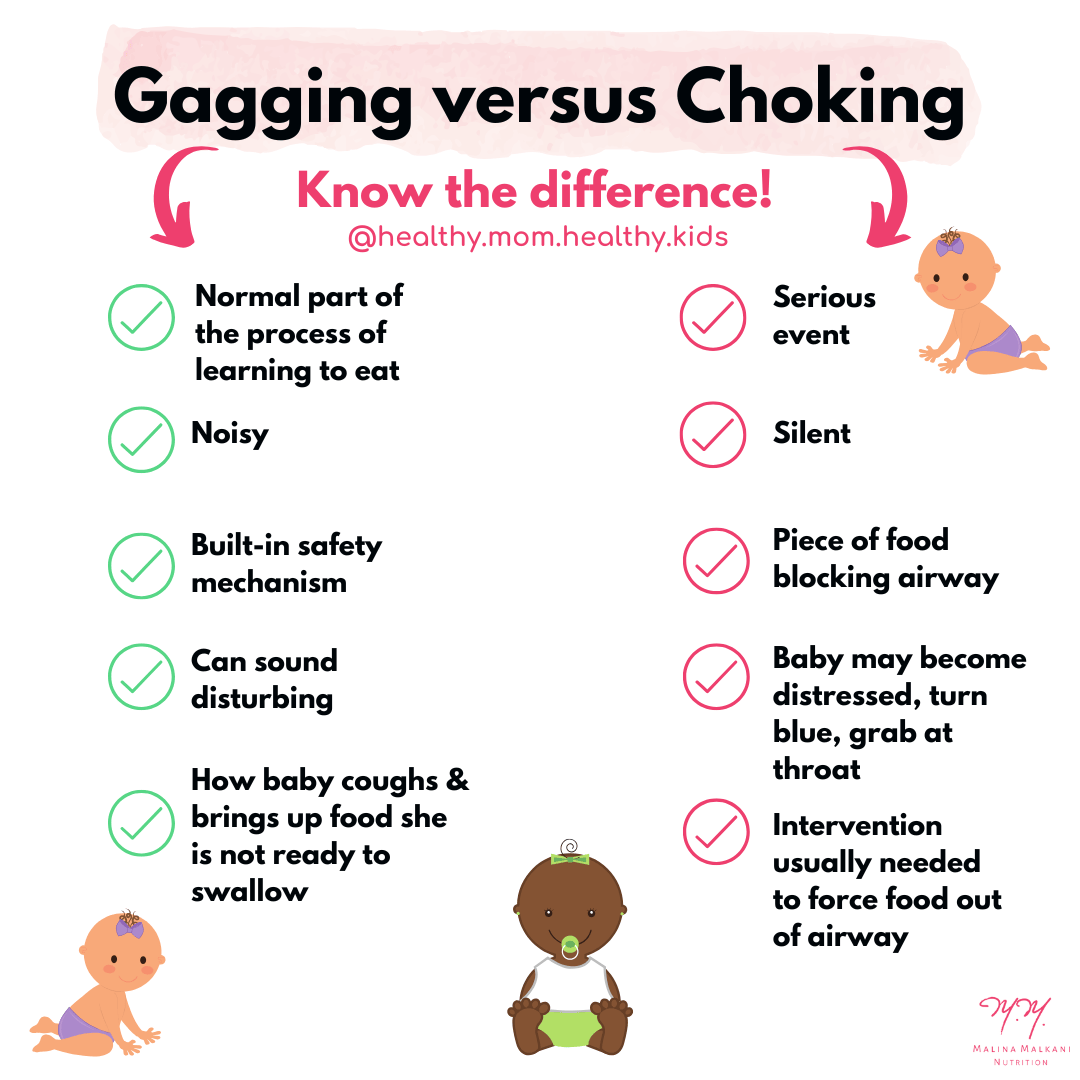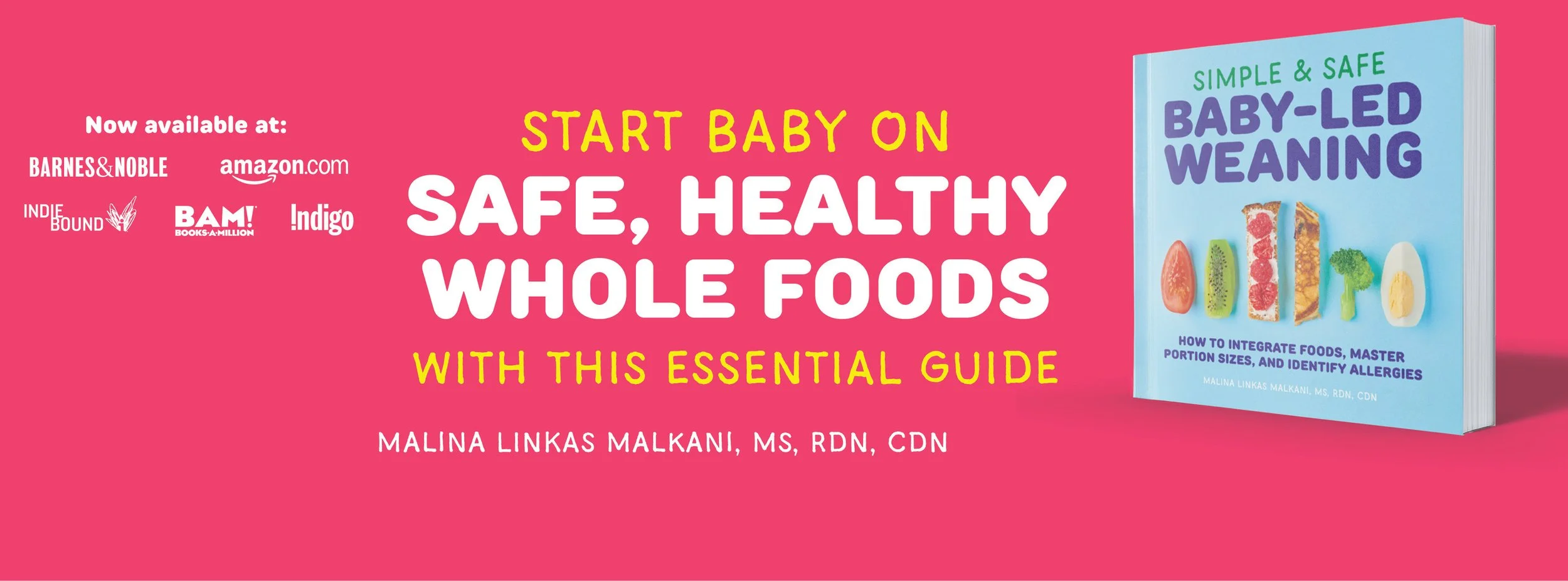Best Baby-Led Weaning Books: A Complete Guide
This blog contains affiliate links, meaning that if you choose to purchase a product through a link, I will receive a small commission - this does not impact the amount you pay. Affiliate links are marked with an asterisk (*).
Starting solids is an exciting milestone in your baby's development, and baby-led weaning (BLW) is a popular approach that encourages self-feeding and exploration of solid foods.
With so many conflicting sources of information available, selecting the right book to guide you through this process is helpful. The right BLW book can provide not only practical tips and recipes but also evidence-based information and the confidence needed to introduce your little one to solid foods right at your fingertips.
But with so many options available, how do you choose the best baby-led weaning book for you and your family? In this post, we’ll go over factors to consider when choosing a BLW book and help you find the right fit to guide you along on your baby’s solid food-feeding journey. Let’s get started!
What is Baby-Led Weaning?
Baby-led weaning is a method that allows babies to explore solid foods at their own pace. BLW also helps foster independence and develop motor skills, and it encourages a positive relationship with food.
Unlike traditional spoon feeding, which involves pureeing foods and using a spoon to feed the baby food, BLW encourages your little ones to pick up food and feed themselves (either with their hands or a preloaded spoon).
BLW can benefit both you and your baby, making family meals more enjoyable and inclusive. It also allows the baby to explore the tastes, textures, and smells of the foods they'll be eating more of once fully weaned.
Key Considerations When Choosing a BLW Book
Not all baby-led weaning books are created equal, and it can be challenging to find the best BLW resource to help guide you through this feeding experience with your baby. In my experience as a pediatric registered dietitian, there are a few key components that help create the most well-rounded BLW books. I’ve listed below these considerations:
1. Evidence-Based Information
When looking for the best baby-led weaning book, prioritize those that provide evidence-based guidance. Books written by credentialed authors, including registered dietitians, can offer reliable information on when to start solids, how to ensure your baby is developmentally ready, how to prepare pieces of food safely and appropriately for infants, and the types of solid foods appropriate for babies at each developmental stage.
**One key area of research that a baby-led weaning book should include is food allergy prevention! Guidelines have changed on this topic significantly in the last 10-20 years, and it is essential that caregivers have the most up-to-date information regarding how to prevent food allergies - which involves offering the most common food allergens early and often starting at around 6 months of age (sometimes a little earlier) when babies show signs of readiness for solid foods.
2. Practical Tips and Recipes
A good BLW book should not only explain the philosophy behind baby-led weaning but also provide practical tips and recipes. Look for books that offer a variety of easy-to-follow recipes for solid foods, including information on how to prepare foods for different developmental stages. This can make mealtime enjoyable and stress-free for both you and your baby.
It is also important for a BLW weaning book to include information about choking versus gagging and how to respond in each scenario. Caregivers should be informed about the most common choking hazards that are dangerous for babies and small children.
3. Focus on Family Meals
One of the great benefits of baby-led weaning is that it draws babies into family meals earlier. Choose a book that emphasizes the importance of including your baby in family mealtimes. This not only promotes social skills and bonding but also allows babies to learn by observing and mimicking eating behaviors, making the transition to solid foods smoother.
4. Flexibility and Adaptability
Every baby is different. A good BLW book should offer guidance that can be adapted based on your baby's needs. If your little one has difficulty starting solid foods or exploring certain textures, requires specific dietary requirements, or has food allergies or other medical conditions, the best books will provide flexible strategies to support this journey.
5. Personal Experiences and Anecdotes
Books that share personal stories and experiences can be incredibly helpful. Look for those that include real-life examples from parents who have successfully implemented baby-led weaning. These anecdotes can offer reassurance and insight into the challenges and joys of starting solids.
Recommended Baby-Led Weaning Titles
There are many great options available, but as a pediatric registered dietitian, infant feeding expert, and mom of three girls, below are a few of my favorites!
They are not actually all BLW books, although each includes plenty of instruction and valuable baby-led weaning insight. Two of them happen to be my own BLW book babies—forgive me for being impartial and for taking some time to highlight them both, why I wrote them, and the valuable information that they contain.
This is my first book, and Food Network named it one of the Top 10 Nutrition Books of 2020! It is a practical guide written to empower you to help your baby self-feed, develop motor skills and an adventurous palate―while making meal preparation easier and cheaper for you!
It offers information about the best natural foods for baby-led weaning with nutrition facts, feeding guidelines, and full-color photos; safety guidelines, including information on prohibited foods; smart kitchen habits; and information on how to navigate, or even prevent, food allergies and sensitivities as baby tries foods for the first time.
This book was designed to be a starting point and quick read that you can get through all in one sitting. Great for no-fuss parents who want to get the show on the road.
My second book is a complete, up-to-date, evidence-based resource for starting solids, baby-led weaning, AND reducing the risk of food allergies, all in one place.
I set out to write this book because I could not find books that included information on both food allergy prevention as well as starting solids and baby-led weaning, all in one place.
Food allergy prevention is incredibly important, but it only works during a short window of time during infancy, so it’s important not to miss it. And given how challenging food allergies can be to manage, they are worth preventing!
This one-stop feeding resource has it all:
A complete plan for allergen introduction, including a flexible 9-day road map for safely introducing top allergens and practical advice for navigating food allergies, intolerances, and sensitivities.
8 weeks of baby-led feeding meal plans to ensure your baby is exposed to top allergens frequently with over 80+ nutritious cornerstone recipes that will make meal prep simple and satisfy the whole family.
Dietitian-approved feeding tips and guidance on balancing finger foods, purees, and breast milk or formula
Tips to encourage your baby’s oral motor development, palate expansion, caregiver bonding, fine motor skill advancement, and more.
Just for fun, here are a few sneak peeks of some of my favorite recipes from the book:
Written by Gill Rapley, PhD, and Tracy Murkett, this is the new version of the book that popularized baby-led weaning from the beginning! Published in the UK, it’s another wonderful guide to introducing solids with a baby-led weaning approach. This edition is current with the latest research on food allergy prevention and baby feeding safety guidelines. It also includes an excellent section on using BLW at daycare.
This comprehensive manual for feeding babies and toddlers during the crucial first years of life is written by a team of pediatric medical and nutritional experts who are also parents. It offers practical, easy-to-follow advice to help you navigate the nutrition issues, medical conditions, and parenting concerns accompanying feeding. It includes recipes, personal stories, and recommendations based on the latest pediatric guidelines.
Written by my friend and colleague, certified speech-language pathologist and feeding therapist, Melanie Potock, this book covers a topic that is incredibly important in the baby feeding and BLW world - how to feed your baby responsively (arguably the least talked about, but most important part of infant feeding in my opinion!). This guide helps you to learn to feed your babies and toddlers “responsively,” which is a no-fuss method that follows your child’s hunger and fullness cues. With easy-to-follow tips covering a broad range of topics from ““to bib or not to bib?” and how to wrangle a “food thrower,” this guide is a must-have for all parents!
Final Thoughts…
Choosing the right baby-led weaning book can make a significant difference in your baby’s solid food journey. By focusing on evidence-based information, credentialed authors, and practical tips and advice, you can find a resource that best fits your family.
The goal with both of my baby-led weaning books has been to help families sail through the process of starting solids and introducing allergens, streamline their approach to mealtimes, and feed their families with confidence and ease. This helps foster a positive feeding experience that encourages babies to explore and enjoy solid foods. Multiple wins accomplished!
If you’re getting ready to start your baby on solids, you may also want to download my FREE Baby-Led Feeding Essentials Checklist to make sure you have everything you need to get started. If you prefer learning via video, you might also want to check out my online course for parents, which will walk you through the whole process of starting solids using a baby-led approach.
And if you're looking for personalized nutrition support for your babies or kids, I am currently accepting new clients in my virtual private practice.
Happy reading and happy feeding!














